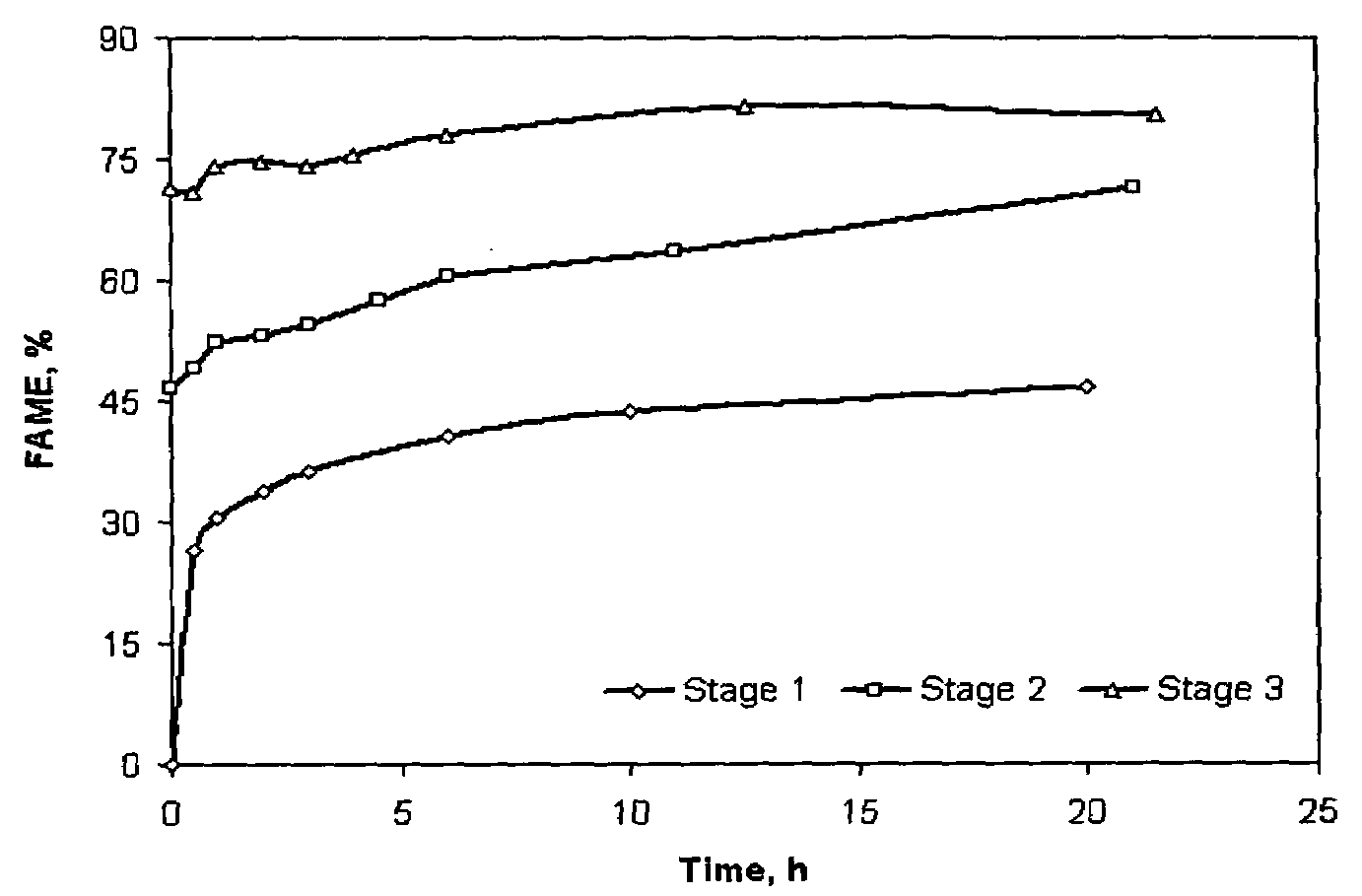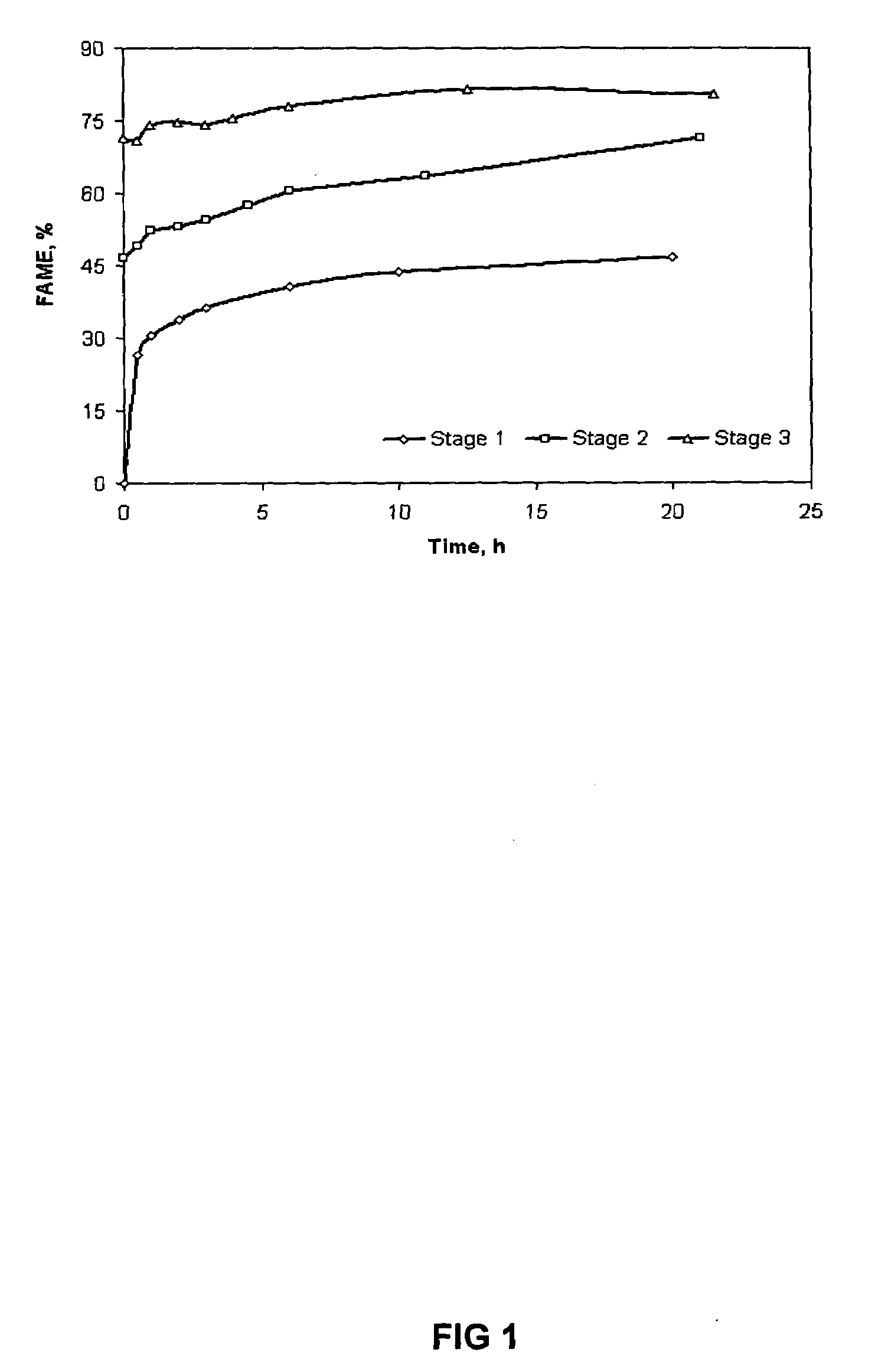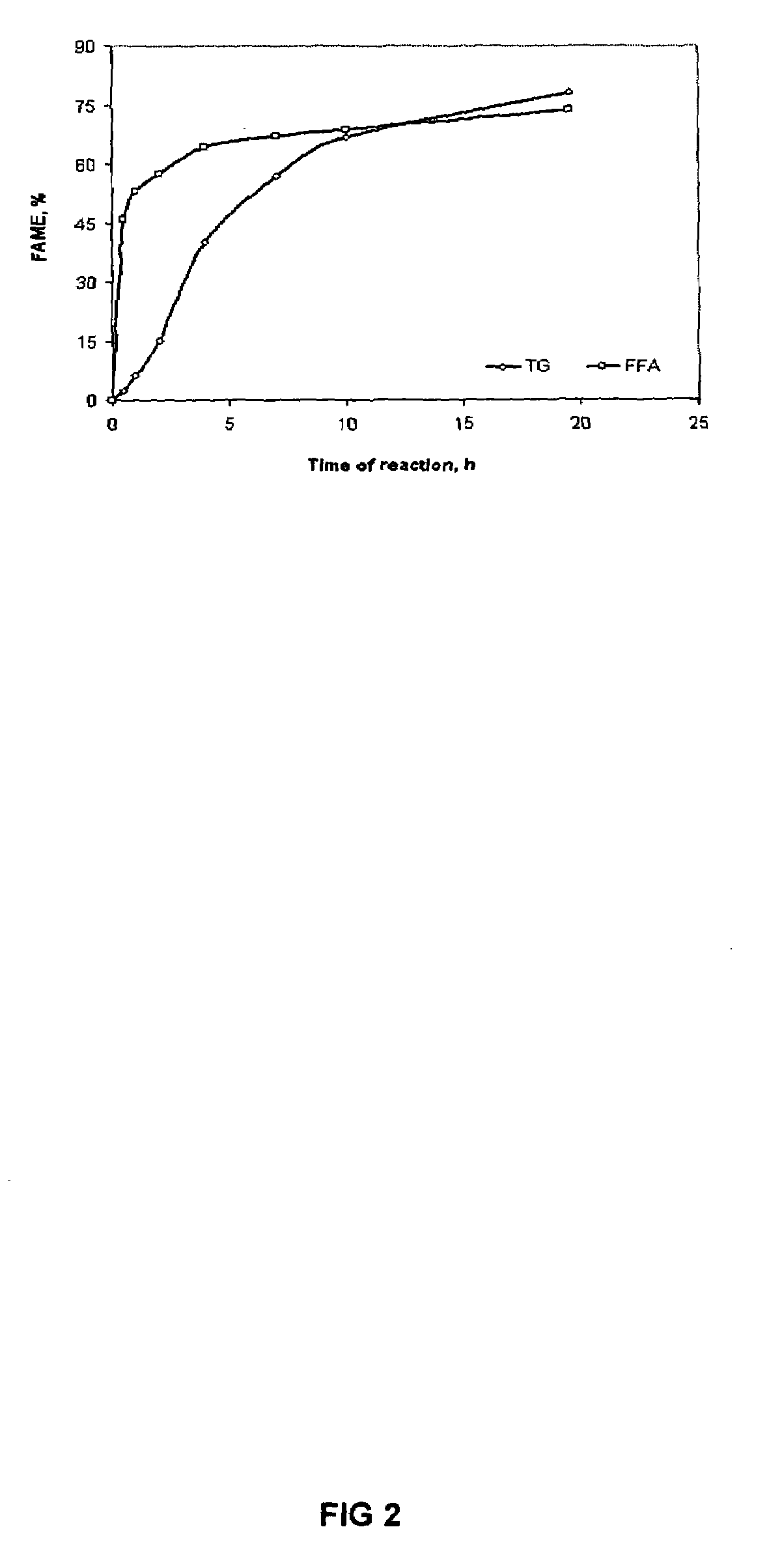Method of converting free fatty acids to fatty acid methyl esters with small excess of methanol
- Summary
- Abstract
- Description
- Claims
- Application Information
AI Technical Summary
Benefits of technology
Problems solved by technology
Method used
Image
Examples
example
Materials and Methods
[0026]Soapstock sources. Twelve separate batches of acid oil generated from soybean soapstock were collected within a month period, representing various oil refining plants (ADM, Cargill, or a mixture of the two sources) and from different settling process (regularly settled or settled from the emulsion layer / tank). Moisture and FFA contents of the acid oils were measured using the standard methods (Ca 2c–25 and Ca 5a–40 of American Oil Chemists Society, for moisture and FFA, respectively) (7).
[0027]Soapstock acidulation. A batch acidification system at Feed Energy Company (Des Moines, Iowa) was used to obtain the acid oil. Crude soapstock was pumped in the reactor, and it was heated to 85–88° C. with steam for 2–4 hrs. An excess amount of sulfuric acid (10–15% above the theoretical amount, based on the FFA content) was used for the reaction. The mixture was allowed to settle, the oil layer was pumped out, the water layer was drained, and the emulsion layer was ...
PUM
 Login to View More
Login to View More Abstract
Description
Claims
Application Information
 Login to View More
Login to View More - R&D
- Intellectual Property
- Life Sciences
- Materials
- Tech Scout
- Unparalleled Data Quality
- Higher Quality Content
- 60% Fewer Hallucinations
Browse by: Latest US Patents, China's latest patents, Technical Efficacy Thesaurus, Application Domain, Technology Topic, Popular Technical Reports.
© 2025 PatSnap. All rights reserved.Legal|Privacy policy|Modern Slavery Act Transparency Statement|Sitemap|About US| Contact US: help@patsnap.com



